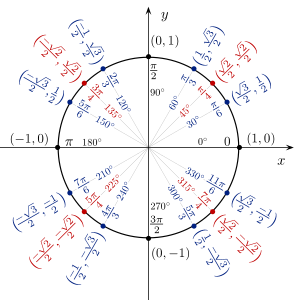How do you solve #sin(2x)+sin(x)=0#?
2 Answers
Or, simplified:
Explanation:
Here's a unit circle to remind us of where the sine and cosine values are:

This means that:
Since these values are the same after any full
Technically, our answers are complete, but we can go a little further.
We can see a pattern in some of the solutions:
Since these are multiples of
Since
We can rewrite this again as multiples of
These are the solutions. Hope this helped!
Explanation:
put
equation will now be reduced to
taking
two possibilities are there
either
if
if
so solution to the equation is


